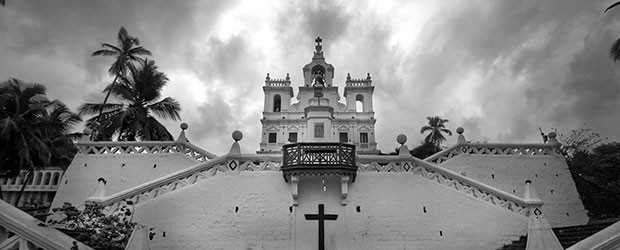Random image from our India photo collection

Rajasthan
History
The past flavor lingers on. However, Rajasthan is much more than the imagination of few rulers. It is an identity created by people, who enjoy life and have ample proof to show for it.
The earliest inhabitants of Rajasthan belonged to the Great Harappan Civilization. This area saw the arrival of the horse riding Aryans from central Asia in about 2000 BC. The Mauryan dynasty, one of the first dynasties to rule over large parts of India controlled this area in about 400 AD. With the passing of time however this arid region became the scene of the ravaging onslaught brought about by the Huns and the Scythians.
The settling of the Scythians in Rajasthan set the stage for the rise of the Rajputs who were the offspring's of the Indo-Scythians. With the passing of time this new race grew into a number of new tribes. Rajasthan thus became the homeland of these groups of warrior clans, collectively called Rajputs, who dominated this region for over a thousand years.
They carved out small kingdoms in this region during the 9th and 10th century AD that were often at war with each other. Due to this lack of unity, the Rajputs were unable to present a combined front against a common aggressor. This weakness ensured that every foreign aggressor in India created enough trouble for the Rajput rulers of Rajasthan.
All this resulted in them being defeated or dominated by the Mughals, who reduced them to the status of the vassals.
Nevertheless the bravery and, sense of pride and honor amongst Rajputs is unparallel in the history of India. Gallantry was the hallmark of the Rajputs. They fought with courage and determination.
Death to defeat was the theme of the Rajput war ideology. They would face the enemy with all their might even if defeat was going to be the result, in which case jauhar was performed.
In this harsh ritual women and children would commit suicide by immersing themselves in a huge funeral pyre. It was for these qualities that some of the Rajputs rulers and chieftains adorned the court of most of the Mughal rulers especially Akbar.
Their warring skills were used to the fullest by Akbar who very effectively used the services of these brave fighters for the protection of his vast kingdom by inducting them into his standing army.
He also entered into matrimonial alliances with prominent Rajput families, the most important, being the one with, Princess Jodha Bai, daughter of the Maharaja of Amber.
With the decline of the Mughal Empire, the Rajputs were gradually able to recover their lost territories and status. These turn of events were however short-lived, as very soon the British set foot on the Indian mainland marking the beginning of one of the most eventful phases of Indian history.
The British Raj, as it was popularly called, was characterized by many new trends and practices. One of these was their policy of signing articles of alliances with most of the princely states in India that ensured their independent existence subject to certain political and economic restrictions. This marked the decline of the once mighty and powerful Rajput dynasties of this region.
After independence Rajasthan became an integral part of the Union of India under the new constitution.
Go back
The earliest inhabitants of Rajasthan belonged to the Great Harappan Civilization. This area saw the arrival of the horse riding Aryans from central Asia in about 2000 BC. The Mauryan dynasty, one of the first dynasties to rule over large parts of India controlled this area in about 400 AD. With the passing of time however this arid region became the scene of the ravaging onslaught brought about by the Huns and the Scythians.
The settling of the Scythians in Rajasthan set the stage for the rise of the Rajputs who were the offspring's of the Indo-Scythians. With the passing of time this new race grew into a number of new tribes. Rajasthan thus became the homeland of these groups of warrior clans, collectively called Rajputs, who dominated this region for over a thousand years.
They carved out small kingdoms in this region during the 9th and 10th century AD that were often at war with each other. Due to this lack of unity, the Rajputs were unable to present a combined front against a common aggressor. This weakness ensured that every foreign aggressor in India created enough trouble for the Rajput rulers of Rajasthan.
All this resulted in them being defeated or dominated by the Mughals, who reduced them to the status of the vassals.
Nevertheless the bravery and, sense of pride and honor amongst Rajputs is unparallel in the history of India. Gallantry was the hallmark of the Rajputs. They fought with courage and determination.
Death to defeat was the theme of the Rajput war ideology. They would face the enemy with all their might even if defeat was going to be the result, in which case jauhar was performed.
In this harsh ritual women and children would commit suicide by immersing themselves in a huge funeral pyre. It was for these qualities that some of the Rajputs rulers and chieftains adorned the court of most of the Mughal rulers especially Akbar.
Their warring skills were used to the fullest by Akbar who very effectively used the services of these brave fighters for the protection of his vast kingdom by inducting them into his standing army.
He also entered into matrimonial alliances with prominent Rajput families, the most important, being the one with, Princess Jodha Bai, daughter of the Maharaja of Amber.
With the decline of the Mughal Empire, the Rajputs were gradually able to recover their lost territories and status. These turn of events were however short-lived, as very soon the British set foot on the Indian mainland marking the beginning of one of the most eventful phases of Indian history.
The British Raj, as it was popularly called, was characterized by many new trends and practices. One of these was their policy of signing articles of alliances with most of the princely states in India that ensured their independent existence subject to certain political and economic restrictions. This marked the decline of the once mighty and powerful Rajput dynasties of this region.
After independence Rajasthan became an integral part of the Union of India under the new constitution.
Go back









